A Franciscan Monastery, a Marble Doctor, and Fate
Jennifer Holder
Special Contributor
Photos Courtesy Mike Bivens and the Franciscan Monastery of the Holy Land in America
Hover over photos to read caption
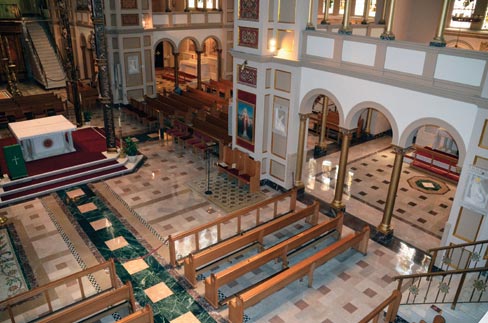 Virginia-based Marble Doctor’s relationship with the Franciscan Monastery of the Holy Land in America in Washington, D.C., started by accident, but it ended up being fate.
Virginia-based Marble Doctor’s relationship with the Franciscan Monastery of the Holy Land in America in Washington, D.C., started by accident, but it ended up being fate.
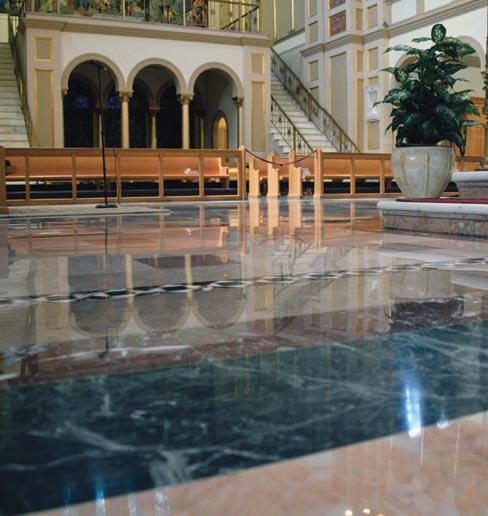 Marble Doctor started their bond with the monastery when a contractor fixing the roof dropped a tool on the bishop’s chair and broke off a piece of marble.
Marble Doctor started their bond with the monastery when a contractor fixing the roof dropped a tool on the bishop’s chair and broke off a piece of marble.
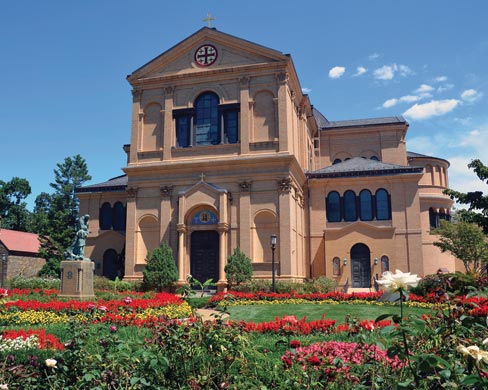 Luckily, the foreman had worked with George Reed, founder of Marble Doctor, in the past, and knew only he could fix the chair quickly and easily.
Luckily, the foreman had worked with George Reed, founder of Marble Doctor, in the past, and knew only he could fix the chair quickly and easily.
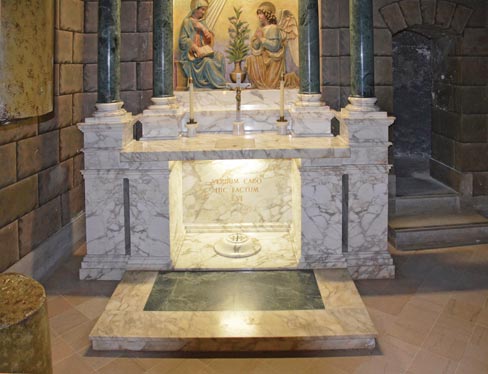 “He said, ‘You’re about the only guy I know to call to repair this and repair it properly.’” recalls George. They went down there, and it was a clean break so the piece fit back in with ease.
“He said, ‘You’re about the only guy I know to call to repair this and repair it properly.’” recalls George. They went down there, and it was a clean break so the piece fit back in with ease.
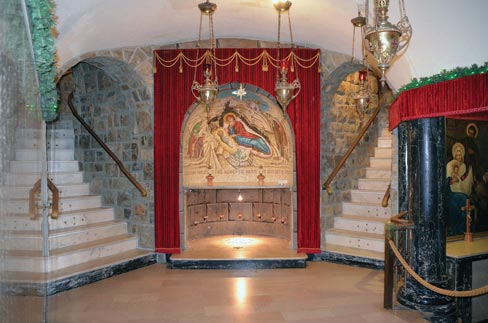 But while he was there, George noticed a number of other problems with the marble in the building, which was built in the late 1800s.
But while he was there, George noticed a number of other problems with the marble in the building, which was built in the late 1800s.
The floors were made of marble but had been repeatedly waxed, causing scratches and giving the floors a dull look. Additionally, the walls and altars were missing the natural shine of marble.
He talked to the foreman about the future of the building and offered his services to Brother Sebastian, who is Secretariat to the Commissariat of the Holy Land and the monastery. Through the foreman, Brother Sebastian requested a proposal, but George had a more immediate idea. He volunteered to polish and clean a small piece of marble in the monastery, so that Brother Sebastian could see the potential. Brother Sebastian agreed, and George and his team got to work.
After throwing only elbow grease and polish into stripping away years of wax, George saw Brother Sebastian and called him over.
“I said, ‘If you’ve got a minute will you take a look at this,’ and he walked over to it and he said, ‘What’d you do to it?’” George says. “And I said, ‘Well, we cleaned everything off that was on it and then we naturally polished the stone.’ He said, ‘I can’t believe it.’”
Afterward, Marble Doctor put a proposal together to do the rest of the monastery. The monastery work that was approved and completed at the time was only a few altars and the main sanctuary floor.
Marble Doctor worked hard, though. For years and years, the only thing used to restore the floors was wax. So when Marble Doctor started polishing the floors, it took a lot of time.
“You don’t polish a piece of stone in 1 to 2 minutes; it takes time. You create natural heat and it opens the pores and the natural polish goes in and that gives you the shine,” George says.
And Marble Doctor, as always, polished the marble naturally, rather than through crystallization.
“It goes without saying that natural stone needs to be able to breathe and if it can’t breathe it tends to destroy itself,” he says. The calcium carbonate will disintegrate over time and will eventually separate.
Instead of waxing often, Marble Doctor is brought back to polish once or so a year, especially because the monastery receives around 2,000 visitors per month. And in the long run, the polishing saves the monastery money. Brother Sebastian commented that the work that Marble Doctor has done has “drastically cut the budget for floor care.”
“Obviously stone is more durable than wax,” says Mike Bivens, Operations Manager at Marble Doctor. “They’ve been able to go a lot longer where they were having people wax the floors pretty frequently at a pretty high cost because of the amount of visits...they can save money by having us restore the stone and maintain it with less visits.”
The maintenance work also preserves the historic marble, which George says is hard to come by these days.
“It’s preserving the stone for them because a lot of that stone is not replaceable. You can replace it but it’s got to be replaced with other stone… (some of) those quarries are now closed,” says George.
In fact, for the monastery job, there were a lot of places in the floor where there were voids, but George had a solution.
“Fortunately, because I’m one of those conservative old geeks that always saved stone, if we ever took any stone out, and there were a couple of places where there were broken stone in the chapel, I happened to have the stone where we could go in and get the pieces out, cut them and shape them and put them back in,” he says.
But in past jobs, he wasn’t always that lucky, so Marble Doctor has sometimes had to be rather inventive.
One of the first major jobs they did was in Richmond, Va., restoring an old hotel and converting it into a home for the elderly. The entire project was a historic preservation project so they were required to save every bit of marble they could save. They didn’t want anything replaced if at all possible.
This particular building was built in the late 1800s and housed one of the first elevators in Richmond. They had a ramp that came down from the elevator where they brought luggage to and from the street in heavy carts with steel wheels, which started cutting holes into the big piece of stone right in front of the elevator.
But George had a problem – there was no place in the building where he could get a similar stone that size that would fit into the overall look of the floor.
“I sat there thinking to myself, well, wait a minute. Let’s try something.” The stone that was installed in the late 1800s was pretty much dry set and grouted and could easily be lifted out.
“So we took the tools, and we took out grout joints, and with spring spatulas we got under it without chipping it,” he says. “We worked it loose and went around and worked the entire piece loose. A friend of mine who worked for me and I raised the piece of stone and we turned the stone over, put it back in place and polished the other side. Nobody knew the difference.”
The restoration work at the monastery continues today. They just got finished with their yearly polish.
And it makes sense, the Franciscan Monastery of the Holy Land in D.C. trains monks to guard and maintain Holy Land sites, so it’s only right that the marble was initially restored and has continued to be restored.
Brother Sebastian has said that he often hears the word “wow” from visitors who come to the monastery, and Mike says that when people do visit it, “they’re probably scared to walk on the floor; they’re so shiny.”
And because of the great work they’ve done at the monastery in the past, Marble Doctor will start work on more parts of the monastery soon. “I’m sure Marble Doctor wouldn’t be going back there unless we had done a good job to begin with,” says George.
Of course, with the monastery operating on a church budget, they won’t be able to do all of the areas they’d like, but Marble Doctors will be starting on the Purgatory Chapel and Nazareth Chapel for restoration in the near future. They’ve given proposals for other parts of the monastery as well.
For more information on Marble Doctor, please visit www.marbledoctorva.com or call 703-631-4625.
And to see the incredible work they’re doing at the Franciscan Monastery of the Holy Land in America, visit www.myfranciscan.org or take a trip to D.C. If you like what you see, make a donation so more work can be done in the future.
